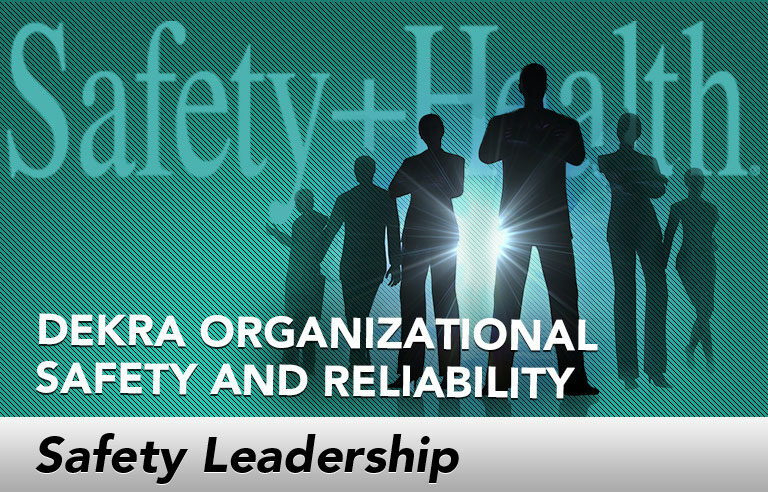Safety Leadership: Retaining talent in a tight labor market

Editor’s Note: Achieving and sustaining an injury-free workplace demands strong leadership. In this monthly column, experts from global consulting firm DEKRA Insight share their point of view on what leaders need to know to guide their organizations to safety excellence.
It’s easy to keep good people when jobs are scarce. However, when the job market tilts in favor of workers, plenty of businesses will roll out the red carpet for people they don’t want to lose.
So how do you keep your best people?
I recently met with an executive team that was facing an alarming number of resignations. In hopes of minimizing defections, it had offered to match the benefits package offered by a prospective new employer. To the team’s dismay, employees turned down the offer, repeatedly. In reviewing exit interviews, the team discovered that many employees were leaving not for more money but for more respect – they didn’t feel respected by the company. “Could things really be that bad here?” the executives asked each other. They agreed that they didn’t know because they were too disconnected from the employees’ everyday lives.
So they reached out for help.
Before meeting with the executive team, I reviewed the organization’s incident data and investigation outcomes. The numbers showed a rise in incident rates, including the percentage of incidents with serious injury potential. More informative was the fact that the most frequent cause cited for an incident was “employee error.” The most common consequence? “A disciplinary action.” When I presented my analysis to the executives, I noted that employees were blamed for almost all incidents and injuries. When I asked how that might affect feelings of being respected, it was clear from their response that this was new and unwelcome information. I also communicated to them that both safety and relationships were likely reasons people were moving on.
I wish I could say I was able to help this organization, but, truth be told, the executives weren’t convinced there was a need to change. The CEO said their most pressing issue was fulfilling customer orders, and turnover was secondary. I later learned that their reaction to losing key employees and being short-staffed was to spread the workload over the remaining workers, resulting in an increase in hours worked and less time off. Those who balked at the new policy were given unpaid leave and/or fired.
The likely outcome of this approach was an even more hostile culture.
Is there a viable alternative? I believe there is. This executive team could have moved swiftly and effectively to stop the hemorrhaging. Here are four steps leaders in similar situations can take immediately:
- Define the desired culture. It’s important that leaders think about, and document, the hallmarks of the culture they want to create and the values they hold dear. This requires taking the time to list the specific and observable attributes that clearly describe the desired future state.
- Interact regularly with the workforce. All executives – regardless of rank or function – should be required to spend time working the line or otherwise having regular, meaningful interactions with employees. Share the cultural attributes and get feedback on how far or close the organization is to achieving this culture. Take time to gather ideas for change, and act on the best ones.
- Conduct a leadership blitz. The basic challenge facing the organization I met with was a lack of true leadership skills. In desperate times, a blitz can be effective. It must involve more than leaders watching a training video – it has to include actual learning and applying new skills, augmented by individual coaching.
- Engage your people. Establish routine update meetings with employees so they are aware of steps taken and the plan moving forward. This will ensure the employees recognize that leaders at all levels are working to make things better.
If these four steps are carried out and communicated with conviction and integrity, organizational leaders can quickly demonstrate they are serious about changing the culture and restoring respect as a core value. This will give employees tempted by other offers a reason to stay.
This article represents the views of the authors and should not be construed as a National Safety Council endorsement.
 Don Groover, CIH (retired), CSP, is senior vice president with DEKRA Organizational Safety and Reliability (dekra-insight.com). Groover develops solutions that leverage the latest technology to improve safety performance in client organizations.
Don Groover, CIH (retired), CSP, is senior vice president with DEKRA Organizational Safety and Reliability (dekra-insight.com). Groover develops solutions that leverage the latest technology to improve safety performance in client organizations.
Direct to your inbox: Sign up to be notified in email about new "Safety Leadership" columns.
Post a comment to this article
Safety+Health welcomes comments that promote respectful dialogue. Please stay on topic. Comments that contain personal attacks, profanity or abusive language – or those aggressively promoting products or services – will be removed. We reserve the right to determine which comments violate our comment policy. (Anonymous comments are welcome; merely skip the “name” field in the comment box. An email address is required but will not be included with your comment.)

